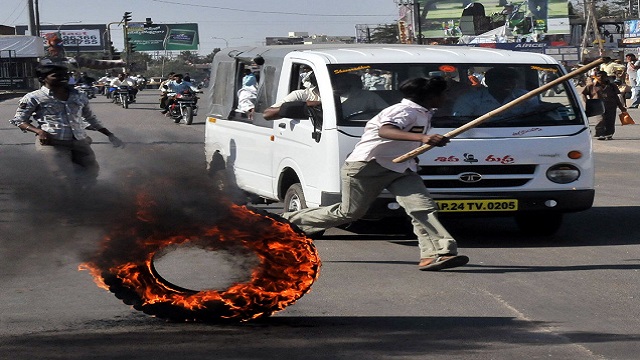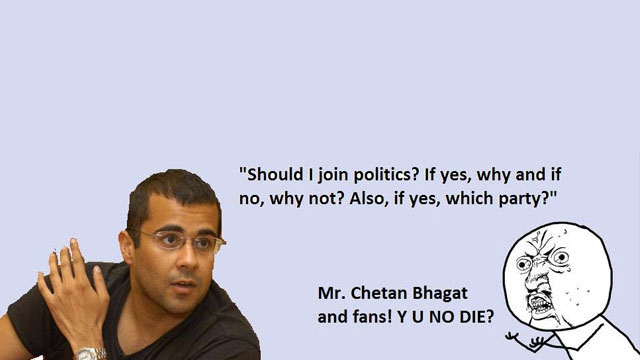Ad-hoc patch work to fiddle with genuine aspirations of people always leads to disastrous results. Political class needs to realise that issues of federalism are not those to be decided on electoral calculations.
If we were to conduct a ranking of the most unenviable political situations to be in the world today, the UPA government in India would surely bag the top slot. Throughout its second term, UPA had a relay of scandals – 2G, CWG, Coal Gate – to name only a few.
A grim economic situation and (a long due) public outrage over a number of legitimate concerns – corruption, inflation, safety of women – have been exacerbated by an acute crisis of leadership. If these were not enough for a party riding on a strong anti-incumbency wave to elections in a few months, the Congress has picked up a real bomb-shell by announcing the formation of Telangana and getting it approved by the Union Cabinet.
The decision has seen a wave of resignations and exodus of ministers and legislators from the party in protest. Now with YSR Congress Chief Jaganmohan Reddy on an indefinite fast in Hyderabad and Chandrababu Naidu set to do the same in Delhi, the Congress is definitely between the devil and the deep blue sea. It cannot go back on ‘T’ after coming so far. And if the past is any indication, it does not have the requisite leadership in it to effectively tackle the protests, and translate them into gradual acceptance.
Political Calculations
Apart from being the ruling party in undivided Andhra Pradesh, the Congress currently has 33 of 42 Lok Sabha seats from the state. Most of it, though, can be attributed to the efforts of former chief minister of Andhra, late Y S Rajshekhar Reddy. With elections approaching and demands for Telangana pinning the party to the wall, the Congress was left with two choices – create Telangana, claim credit and get a possible 17 seats from the state that will be newly formed; or draw a blank in a united Andhra Pradesh.
In the event of a non-decision, Congress strategists felt, K. Chandrasekhar Rao, leader of the Telangana Rashtra Samiti (TRS), and others would have blamed the Congress and walked away with a handsome tally in Telangana. But in Seemandhra (the term used for Coastal Andhra and Rayalaseema combined), the credit for keeping the state united would not have accrued to the Congress, where the YSR Congress has made sufficient dents in the party’s base.
Clearly, it was a decision purely with electoral calculations in mind. Jagan, as the Kadapa MP is popularly known as, summed it up when he asked, “Just for 16-17 seats, how can they play with the future of lakhs of people in a state?” In fact he went a step to directly attack the Congress president and said, “Someone wanted the son to become a PM and bifurcated Telangana.”
However, the calculations by the Party, it seemed, had not taken into account the substantial anti-Telangana sentiments in its own ranks. Just after the cabinet decision, a spate of resignations followed, with those of Union tourism minister Chiranjeevi and minister of state for railways Kotla Surya Prakash Reddy being the prominent ones. HRD minister Pallam Raju and ministers of state D Purandeshwari and K Kruparani also announced their resignations. Many MPs have already resigned and said they quit the party. The mess could not be deeper.
The Movement
Andhra Pradesh, as we know it today, has three main cultural regions: Telangana, Coastal Andhra and Rayalaseema. Telangana is the largest of the three regions, covering 41 % of the total area and approximately the same percentage of population in the state. Among the many reasons that the protagonists of Telangana cite, economic backwardness, relative deprivation (vis-à-vis Seemandhra) and political subjugation are important.
When the Government of India annexed the princely state of Hyderabad in Operation Polo, the Telugu speaking people were mostly distributed in the princely state of Hyderabad, Madras Presidency..
The overarching need of national unity and integration, as well as Nehru’s reluctance to recognising linguistic identities as the bases of regional organisation, meant that these peoples were to stay divided on administrative lines. However, the death of Potti Sri Ramulu in 1953 forced the government to create the Andhra state by carving out Telugu-speaking areas in the Northern Circars and Rayalaseema regions of the erstwhile Madras state.
With Andhra having been formed, soon there were demands for bringing the Telangana region also in its fold. However, the States Reorganisation Commission, appointed in 1953, was not in favour of an immediate merger of Telangana with Andhra state, despite their common language. It noted that the people of Telangana had several concerns. They had a less-developed economy than Andhra, but had a larger revenue base which could be diverted for use in Andhra.
Irrigation projects on the Krishna and Godavari, they feared, would not benefit Telangana proportionately, even though people of Telangana controlled the headwaters of the rivers. It was feared that the people of Andhra, who had access to higher standards of education under the British rule, would have an unfair advantage in seeking government and educational jobs. It is pertinent to note that some of these concerns still figure prominently in the demands of a separate Telangana.
Despite the unwillingness of the people of Telangana to form the larger Andhra Pradesh, the merger was done after what is known as the Gentleman’s Agreement between the leaders of the two regions to safeguard the interests of Telangana. Nehru termed the merger a “matrimonial alliance having provisions for divorce”.
The new state of Andhra Pradesh could neither dispel the fears of the people of Telangana, nor did it take effective steps to address their genuine grievances. The discontent grew and soon took the form of a movement for a separate state. The rest is history. The divorce that Nehru envisaged has come about 57 years later, completing a full circle.
Lessons for a Fledgling Democracy
What do we learn from this forced marriage and consequent divorce? Can the T incident be used as a case study to reflect upon our failings, and facilitate departure from the ridiculous ad-hocism and confusion that prevails in the politics of federalism in this country? Can relevant insights be drawn so as to better our approach towards other similar demands for statehood? The answers are anybody’s guess.
For those who care, the lessons are note-worthy.
First, it should become clear by now that ad-hoc patch work to fiddle with genuine aspirations of people always leads to disastrous results.
Second, and more importantly, it should be recognised that demands of statehood are not the end objectives in themselves. Rather, they are the culmination of many other factors. It is only when people lose all hope in the current administrative set-up that they resort to the demands for statehood.
Third, it is high time we discarded our naïve methods of approaching issues with a singular lens – be it language, region, gender or anything else. The problems in such a heterogenous society will always be multi-faceted and will in turn require multi-dimensional approaches to address. In the case of Telangana, even though there was a state that was created on the basis of language, yet ignoring the developmental aspirations of people in certain areas was not accepted. Even after the creation of Telangana, if the genuine needs of people are not addressed, we can surely witness other movements – but with the same concerns. Balkanisation is not the answer.
Last, and though this may be a point in vain, but the political class needs to realise that issues of federalism are not those to be decided on electoral calculations.
But who cares!!





